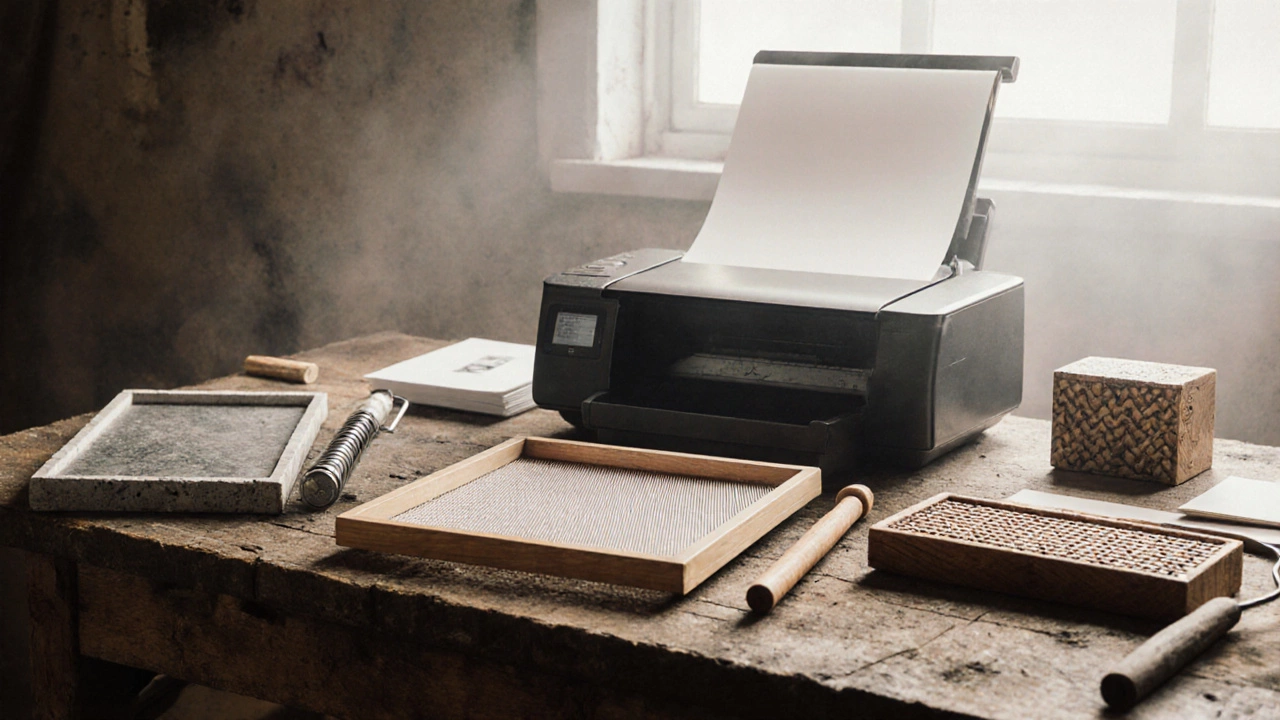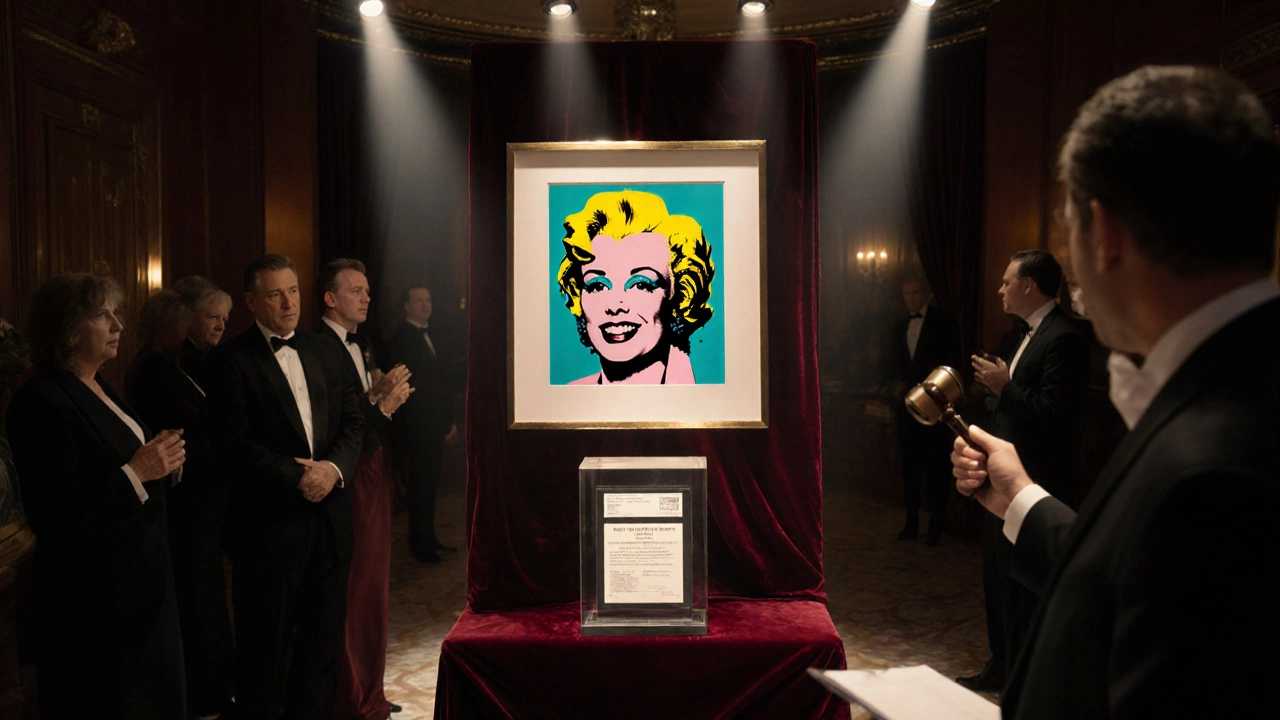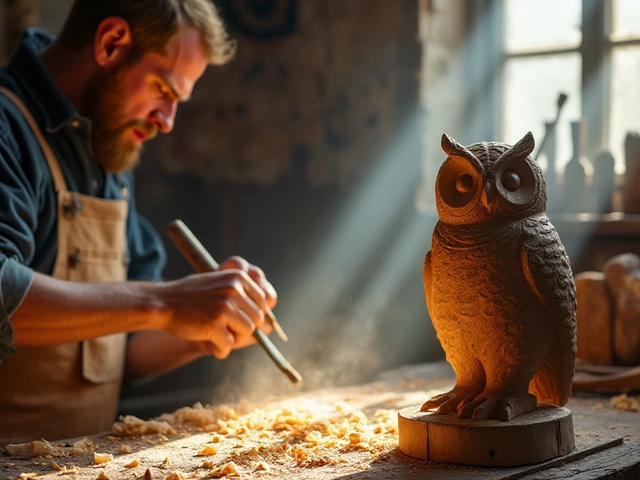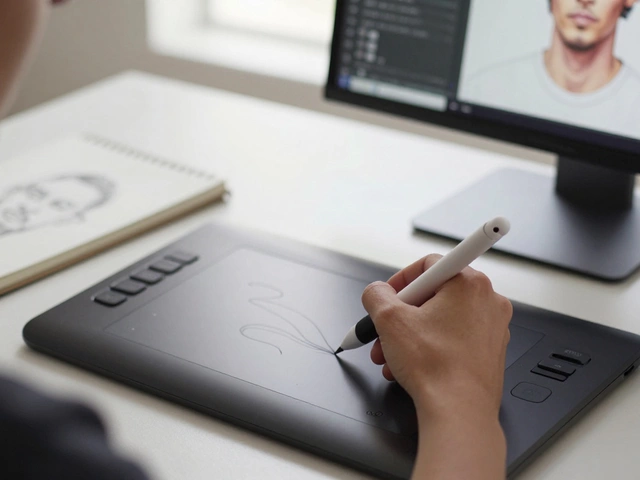Art Print Value Calculator
Calculate Your Print's Investment Potential
This tool estimates potential value based on article guidelines. Remember: professional appraisal is recommended for prints over $5,000.
Estimated Investment Value Range
Smaller editions () increase value potential
Higher condition ratings () boost value
Serigraphs generally show strongest investment potential
Ever stared at a wall of prints and wondered if that limited‑edition piece could actually turn into a solid investment? You’re not alone. The market for valuable art prints is a mix of glamour, history, and a bit of detective work. Below you’ll find everything you need to spot a print that’s more than just decoration.
Key Takeaways
- Prints by well‑known artists, produced in small editions, usually hold the most value.
- Condition, provenance, and authentic signatures are essential price drivers.
- Popular high‑value types include lithographs, serigraphs, giclées, etchings, and wood‑cuts.
- Use a checklist before buying: verify edition size, certificate of authenticity, and compare recent auction results.
- Resell through reputable auction houses or specialist galleries for the best return.
Understanding the Main Print Types
Art prints are reproductions of an original artwork, produced using a specific printing technique. Unlike a poster, a true art print is limited, signed, and often comes with a certificate of authenticity.
Lithograph - A stone‑or‑metal plate is used to transfer ink onto paper. Famous lithographers include Henri de Toulouse‑Lautrec and Pablo Picasso. Lithographs typically run in editions of 50-200, and the lower the number, the higher the potential resale value.
Serigraph (or screen print) - Ink is forced through a mesh screen onto the paper. Andy Warhol turned serigraphy into pop‑culture gold; his Marilyn series still fetches six‑figure sums at auction.
Giclée - A high‑resolution inkjet print on archival paper or canvas. Modern photographers and digital artists rely on giclées for reproducing fine details. While giclées can be produced in larger runs, limited‑edition series from artists like Yoko Honda have shown strong secondary‑market performance.
Etching - An intaglio technique where lines are incised into a metal plate, then inked and pressed onto paper. Master etchers like Rembrandt and contemporary figures such as David Hockney have set benchmarks for price per edition.
Wood‑cut - Similar to etching but uses relief carving on wood. Japanese ukiyo‑e masters such as Hokusai produced wood‑cut prints that continue to trade at high prices.
What Drives a Print’s Value?
Not every limited edition is a goldmine. Consider these six factors before you hand over cash.
- Artist Reputation - Works by artists with established museum collections or a strong auction record command premium prices.
- Edition Size - Smaller editions mean fewer copies in the market. An edition of 30 will generally out‑perform an edition of 500.
- Condition - Any creases, discoloration, or restoration will knock down value. Print grading services use a 1‑10 scale; aim for 9+.
- Provenance - A documented ownership chain (gallery receipt, previous collector, exhibition history) boosts confidence and price.
- Signature & Certificate - Hand‑signed prints with a Certificate of Authenticity (CoA) from the artist’s studio or a recognized foundation are far more marketable.
- Print Medium - Certain processes, like original lithographs or hand‑pulled serigraphs, are more coveted than mass‑produced digital prints.

Current Market Hot Picks
Here are five print categories that have consistently shown strong appreciation from 2020‑2025.
- Warhol Screen Prints - Limited runs of iconic subjects (Marilyn, Campbell’s Soup) regularly exceed their original sale price by 150‑300%.
- Japanese Ukiyo‑e Wood‑cuts - Original Hokusai or Hiroshige editions, especially those with museum provenance, can command six‑figure sums.
- Pablo Picasso Lithographs - Even lesser‑known subjects from his 1930‑40 period have seen price gains of 120% in recent auctions.
- Shepard Fairey Posters - Limited‑edition street‑art prints, particularly those linked to major campaigns, have surged in demand on platforms like Artsy.
- Contemporary Giclée Series - Artists like Yayoi Kusama and Banksy releasing numbered giclées have seen secondary‑market resale within months, often at 80‑130% of the original price.
Step‑by‑Step Checklist for Evaluating a Print
Use this simple list before you sign any purchase agreement.
- Confirm the artist’s name and signature match known examples. Look up reference images from museum collections. \n
- Check the edition number (e.g., 12/50). Verify that the total edition size is documented on the CoA.
- Inspect the paper type. Archival, acid‑free papers are a must for long‑term stability.
- Examine the printing technique. Hand‑pulled prints often show subtle inconsistencies that machine prints lack.
- Request provenance documents: gallery receipt, exhibition catalog, or previous sales records.
- Ask for a professional grading report if the print is high‑value (above $5,000).
- Research recent auction results using databases like Artprice or Artnet. Compare the asking price to last sale price.
- Consider storage costs. Proper climate‑controlled storage can add to the total ownership expense.
Where to Buy and How to Sell
Finding reputable sources reduces the risk of fakes and ensures fair pricing.
- Auction Houses - Christie’s, Sotheby’s, and Phillips regularly hold dedicated print auctions. Their pre‑sale catalogs list provenances and estimated ranges.
- Specialist Galleries - Look for galleries that focus on prints, such as the Gagosian Print Department or the Print Center New York. They often provide in‑house authentication.
- Estate Sales & Artist Studios - Direct purchases from the artist’s studio can yield the lowest premiums, but always ask for a CoA.
- Online Platforms - Websites like Artsy, Paddle8, and Saatchi Art have verification processes. Stick to listings that include high‑resolution images of the signature and edition block.
When it’s time to sell, list the print with the same type of documentation you gathered at purchase. Resellers value clear provenance, so having a digital copy of the CoA and any exhibition history will speed up the transaction.

Print Types vs. Investment Potential
| Print Type | Typical Edition Size | Average Price Range (USD) | Investment Rating |
|---|---|---|---|
| Lithograph | 50‑200 | $1,000‑$30,000 | High |
| Serigraph (Screen Print) | 25‑100 | $2,000‑$50,000 | Very High |
| Giclée | 100‑500 | $500‑$10,000 | Medium |
| Etching | 30‑150 | $2,000‑$35,000 | High |
| Wood‑cut | 20‑80 | $1,500‑$25,000 | High |
Frequently Asked Questions
How can I tell if a print is a genuine limited edition?
A genuine limited edition will have a visible edition number (e.g., 12/50) printed on the front or back, a hand or machine signature from the artist, and a Certificate of Authenticity issued by the artist’s studio or a recognized foundation. Cross‑checking these details with the artist’s catalogue raisonné or the gallery’s records is essential.
Do unsigned prints ever increase in value?
Unsigned prints can appreciate, but they usually lag behind signed counterparts. Value growth depends heavily on the artist’s fame and the scarcity of the edition. Collectors typically prefer signed pieces because the signature serves as a primary authenticity marker.
What storage conditions keep prints in top condition?
Store prints in a climate‑controlled environment (68‑72°F, 40‑45% relative humidity). Use acid‑free sleeves, archival framing materials, and UV‑filtering glass. Avoid basements and attics where temperature fluctuations are common.
Are giclée prints considered as valuable as traditional lithographs?
Generally, giclée prints are valued lower than traditional lithographs because they can be produced in larger runs with modern printers. However, limited‑edition giclées from high‑profile contemporary artists can break that rule and fetch strong prices, especially when the artist personally signs each piece.
What’s the best place to sell a high‑value print?
For prints above $10,000, reputable auction houses (Christie’s, Sotheby’s) or specialist print galleries tend to deliver the highest returns. They provide a catalogued sale, professional appraisal, and access to a network of serious collectors.
Next Steps
If you’ve identified a print that ticks the boxes-small edition, strong provenance, good condition-start by requesting the CoA and a grading report. Compare recent auction results, then decide whether to buy outright or place a bid at a live auction. Remember, the most successful collectors treat each purchase as both a visual pleasure and a strategic asset.







